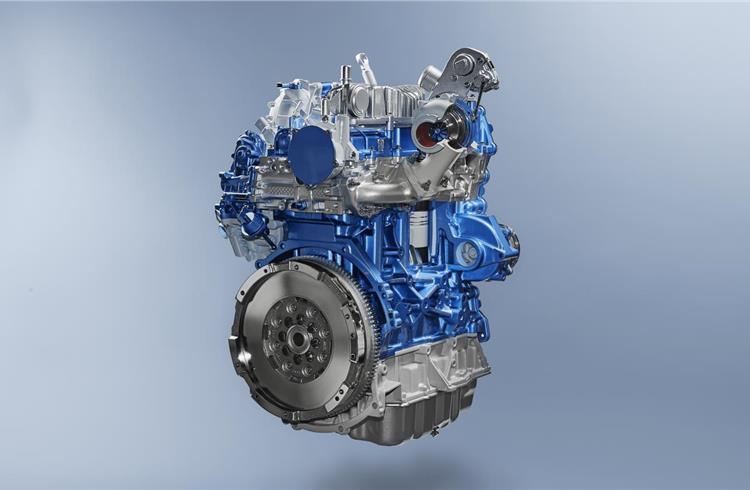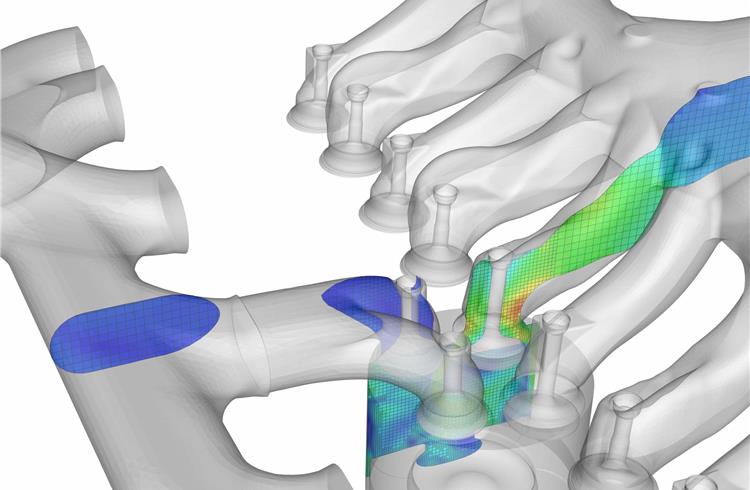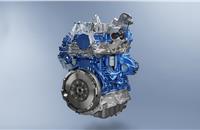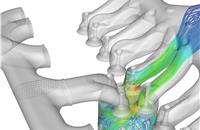In-cylinder simulations run faster than ever before with innovative software
Ford EcoBlue diesel engines developed using advanced combustion modelling tool from specialist CFD company Convergent Science.
Ford has used an innovative combustion modelling tool for the development of its new EcoBlue range of high-efficiency diesel engines. The Converge CFD software package from Convergent Science has been used by the Ford engineers to develop the new 2-litre EcoBlue diesel engines available in the Ford Transit.
“The use of Converge has allowed us to run high quality in-cylinder CFD simulations,” said Dr Werner Willems, Ford technical specialist for combustion systems. “We used Converge to refine a number of features on the EcoBlue, including the shape of the combustion chamber, the piston bowl geometry and the fuel injection parameters.”
In particular, Dr Willems and his colleagues used the package during the development of the EcoBlue’s innovative mirror-image intake ports. In a first for Ford, the symmetrical design of the integrated inlet manifold causes the air going to cylinders one and two to swirl clockwise, while the supply to cylinders three and four swirls anti-clockwise.
“The two sets of ports are essentially mirror images of each other,” explained Dr Willems. “When you have a lot of variation between the airflow you’re always focusing on getting the weakest cylinder to work properly, which means the others are being held back. Our mirrored port design improves the distribution of air between the cylinders, which reduces emissions and fuel consumption.”
This contributes to the EcoBlue’s impressive environmental credentials, which include a 13 percent reduction in fuel economy compared to its predecessor, as well as significant reductions in tailpipe emissions.
CFD studies are a powerful tool in engine development, but they have traditionally been a time-consuming and complex process. Converge, however, reduces the amount of manual input required by automating the meshing process carried out before the simulation.
What’s more, it uses a function known as Adaptive Mesh Refinement (AMR) to regenerate the grid at each time-step, re-structuring it to accommodate changes in geometry or activity. That means that events such as valve opening and piston motion can be modelled without stretching or skewing the mesh, which would incur so-called deformation errors. More importantly, the AMR function is fully coupled with the flow and chemistry solvers, so it can automatically vary the mesh density across the model. By applying a denser mesh in more critical areas but reducing the cell count elsewhere it can dramatically improve the speed-to-accuracy ratio of the simulation.
Ford engineers are now pressing ahead with development of the EcoBlue range, which will shortly expand to include passenger car variants. Simulation tools such as Converge look set to play a major part in this work, as the company continues to target improved fuel economy and reduced emissions.
Feature: Seeing tomorrow today - Why this CAE design company is targeting automakers?
RELATED ARTICLES
Kia displays EV5 and Sonet SUVs for Chinese market
Kia has unveiled a number of key models and new technologies for Chinese customers at the 2024 Beijing International Aut...
Nissan targets growth in China, unveils four NEV concepts at Beijing Motor Show
The two EVs and two plug-in hybrids are a joint effort with Nissan’s local partner Dong Feng and aimed to better address...
Lamborghini unveils Urus SE ahead of Auto China 2024
Electric-only range of 60km helps reduce emissions by 80%.





 By Autocar Pro News Desk
By Autocar Pro News Desk
 10 Oct 2016
10 Oct 2016
 3671 Views
3671 Views














